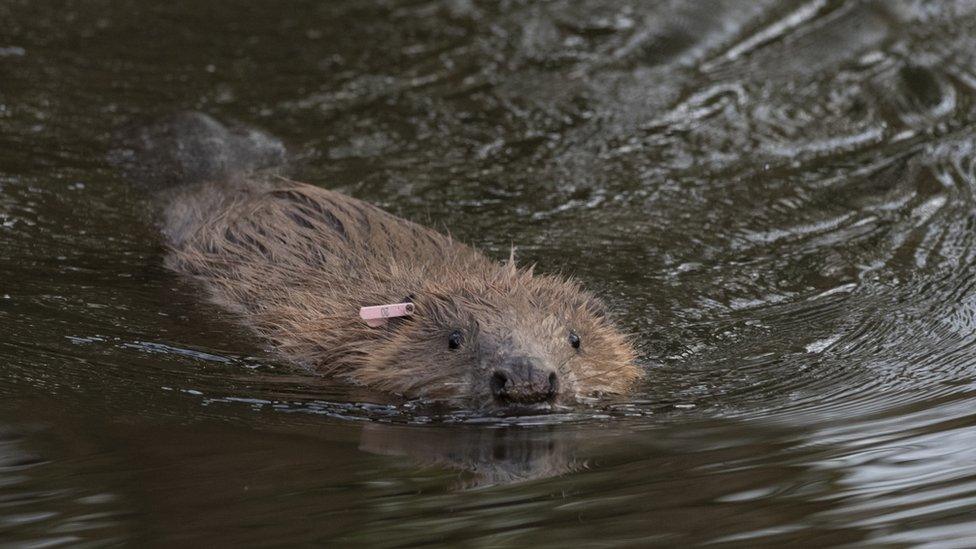How weather has affected wildlife this year in the UK
- Published

January: The weather was quite mild in January - in fact it was the sixth warmest January since 1884. Rainfall was 94% of average and sunshine 100% of average. The National Trust released its first ever beavers at the Holnicote Estate in Somerset to help prevent flooding of the nearby landscapes and villages.
February: It was a bit of a washout. Three storms hit the UK during February - Ciara, Dennis and Jorge. The heavy rainfall meant that many areas flooded, including parts of Yorkshire, Wales and the Midlands. It was the wettest February on record for England, Wales and Northern Ireland, and the second wettest (behind February 1990) for Scotland. Storm Ciara battered the beach at Formby, Merseyside, where strong winds can affect the natural dune cliffs that have formed all along the coastline.
March: Spring was springing into action, rainfall was 82% of average and sunshine 134% of average. Parts of Snowdonia were so covered in blackthorn blossom, that it looked like it had snowed!
April: As the UK went into lockdown, it was the sunniest April ever recorded, with levels of sunshine at 151% of the average for the month, and rainfall levels were low. This pair of peregrine falcons nested at Corfe Castle for the first time since the 1980s as a result of less visitors being around.
May: This was THE sunniest spring on record in the UK, with 266 hours of sunshine, beating the previous record of 265 hours in June 1957. It was also the driest May in England and second driest in Wales with barely any rainfall. This was good news for butterflies, and this Marsh Fritillary was spotted at The Coombes, Hinton Parva for the first time.
June: The warm and sunny weather from May continued into the beginning of June, but then heavy rain and thunder storms arrived which again caused flooding in some areas. This little Woodcock chick was discovered by rangers at Lyme Park, who bred there for the first time during lockdown due to lack of disturbance.
July: The weather was a bit mixed in July, from soaring high temperatures to heavy showers. On 25 July, the UK recorded its hottest temperature on record of 37.8 degrees Celsius recorded at Heathrow airport. 750 large blue butterflies were recorded over the summer on Rodborough Common in Gloucestershire as part of a project to reintroduce them back into the UK.
August: This was another mixed month for weather, featuring a mini heatwave and rainy showers. Around 20 grass snakes were spotted at Stowe in Buckinghamshire – soaking up the suns rays to warm-up.
September: Bright showery weather meant a bumper harvest for lots of orchards in the UK. A lack of late frosts, and a largely warm spring meant a spectacular blossom season, which followed by rain in July and August helped the fruit to grow.
October: This was a wet one! It even had one of the wettest days on record, on 3 October, with an average of 31.7mm falling across the whole of the UK. Many places reported a great year for autumn colour though, as high levels of sunshine in spring and more settled weather at the end of September meant that trees could hold on to their leaves for longer and had high sugar content - which makes their spectacular autumn colours pop.
November: Started out mild, wet and windy and cold before becoming more settled. Rangers at Blakeney Point in Norfolk had a bumper year for grey seal pups with numbers predicted to reach 4,000 for the first time!
December: So far it has been a pretty warm and wet December. Snowdonia in Wales got its first significant snowfall later than normal. Snow here forced the wild goats off the mountain and in to the woodlands.
